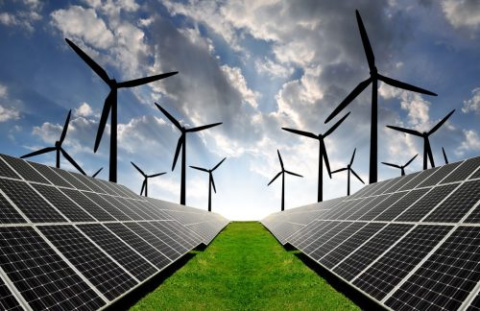Africa is experiencing an unprecedented surge in renewable energy development. Countries across the continent are harnessing abundant solar, wind, hydro, and geothermal resources to meet rising electricity demand, improve energy security, and reduce reliance on fossil fuels. Yet as renewable penetration increases, new challenges arise, particularly in integrating variable energy sources into fragile and underdeveloped grid systems. This article examines the grid integration challenges Africa faces, their implications for energy security, and potential pathways to solutions. Learn more at https://bterenewables.com/.
The Growing Role of Renewables in Africa
Africa is home to some of the richest renewable energy resources in the world:
- Solar: The continent receives some of the highest levels of solar irradiation globally.
- Wind: Coastal and high-altitude regions such as Kenya’s Rift Valley and South Africa’s Cape provinces are wind hotspots.
- Hydro and Geothermal: Ethiopia, Kenya, and Uganda leverage large-scale hydropower and geothermal plants.
Driven by falling technology costs, government targets, and international climate commitments, renewable projects are expanding rapidly. However, the integration of intermittent resources like solar and wind presents significant operational and economic challenges for national utilities and regional grids.
Key Grid Integration Challenges
a) Intermittency and Variability
Solar and wind generation are inherently variable, fluctuating with weather and daily cycles. Without adequate storage or flexible backup generation, high penetration of these resources can destabilize fragile grids, leading to frequency imbalances and outages.
b) Limited Transmission Infrastructure
Many renewable hotspots are located far from demand centers. For example, solar-rich deserts in North Africa or wind corridors in East Africa are often hundreds of kilometers from major cities. Transmission bottlenecks prevent efficient delivery of power and cause renewable curtailment.
c) Grid Stability and Ancillary Services
Traditional grids rely on large thermal plants for stability services, such as inertia, voltage control, and frequency regulation. With renewables displacing these plants, African grids must find alternative sources of ancillary services.
d) Insufficient Storage Solutions
Energy storage is critical to smooth fluctuations and provide dispatchable power. Yet large-scale storage deployment, whether batteries, pumped hydro, or thermal, is still limited in Africa due to high upfront costs and a lack of financing.
e) Weak Grid Management Systems
Many utilities lack modern forecasting, dispatch, and control systems to manage high levels of renewables. Manual grid operations cannot cope effectively with fast-changing renewable output.
f) Financial and Policy Barriers
Integration requires significant investment in infrastructure, smart technologies, and storage. However, utilities in many African countries face financial deficits, while regulatory frameworks for grid-connected renewables remain underdeveloped.
Country-Level Examples
- South Africa: As part of its Renewable Energy Independent Power Producer Procurement Programme (REIPPPP), South Africa has added significant wind and solar capacity. However, transmission bottlenecks in provinces like the Northern Cape limit renewable dispatch to the national grid.
- Kenya: With growing geothermal, wind, and solar projects, Kenya faces balancing challenges. The variability of wind at Lake Turkana, combined with grid congestion, has caused curtailment and contractual disputes.
- Ethiopia: The Grand Ethiopian Renaissance Dam and large wind farms are expanding renewable capacity. But insufficient transmission to neighboring markets limits export potential.
- Morocco: Ambitious solar and wind programs highlight the need for cross-border integration with Europe and neighboring countries to stabilize renewable output.
4. Impacts of Poor Integration
If grid integration challenges remain unresolved, Africa could face:
- Renewable Curtailment: Wasted clean energy when generation exceeds grid capacity.
- Load Shedding: Increased blackouts due to grid instability.
- Financial Strains: Revenue losses for independent power producers (IPPs) and utilities.
- Reduced Investor Confidence: Slower project pipelines if grid connection risks remain high.
- Stalled Climate Goals: Inability to meet renewable targets despite abundant resources.
Pathways to Overcome Integration Challenges
: a) Investment in Transmission Infrastructure
Expanding and modernizing transmission lines is essential to connect renewable-rich regions with demand centers. Regional interconnectors can also enable power trading between countries, balancing variability across a wider geography.
b) Energy Storage Deployment
Utility-scale batteries, vanadium flow systems, and pumped hydro storage can mitigate intermittency and provide peak power. Pairing solar and wind with storage enhances dispatchability.
c) Advanced Grid Management and Forecasting
Investing in smart grid systems, real-time monitoring, and weather forecasting tools enables better planning and balancing of renewable output. Artificial intelligence and digital twins offer future opportunities for predictive grid management.
d) Flexible Generation and Demand Response
Gas peaker plants, hydro reservoirs, and demand-side management programs can complement variable renewables by quickly adjusting output or consumption.
e) Policy and Regulatory Reforms
Governments must establish clear frameworks for renewable integration, incentivize storage adoption, and ensure utilities are financially stable to invest in grid upgrades. Transparent and supportive policies also attract private sector capital.
f) Regional Power Pools
Strengthening regional cooperation, through the Southern African Power Pool (SAPP), East African Power Pool (EAPP), and others, allows countries to share resources, export surplus renewables, and reduce reliance on single grids.
Opportunities Ahead
Despite the challenges, high renewable penetration offers Africa unique opportunities:
- Leapfrogging Fossil Infrastructure: With fewer legacy assets, African nations can adopt flexible, renewable-centric grids from the outset.
- Economic Growth and Job Creation: Investments in grid upgrades, storage, and digital systems create new industries and employment opportunities.
- Climate Leadership: By solving integration challenges, Africa can position itself as a global leader in clean energy innovation.
- Energy Access Expansion: Hybrid renewable-storage systems can power rural communities while reducing dependence on costly diesel.
To Conclude
The future of Africa’s energy systems depends not only on building more renewable plants but also on integrating them effectively into the grid. High renewable penetration poses significant challenges, from intermittency and transmission bottlenecks to weak grid management and financial constraints. Yet with smart policies, regional cooperation, and investments in storage and infrastructure, Africa can transform these challenges into opportunities.
By addressing integration barriers today, African nations can unlock a clean, resilient, and inclusive energy future, one that powers economic development while safeguarding the environment.For further insights into renewable integration and sustainable energy solutions, visit https://bterenewables.com/.
